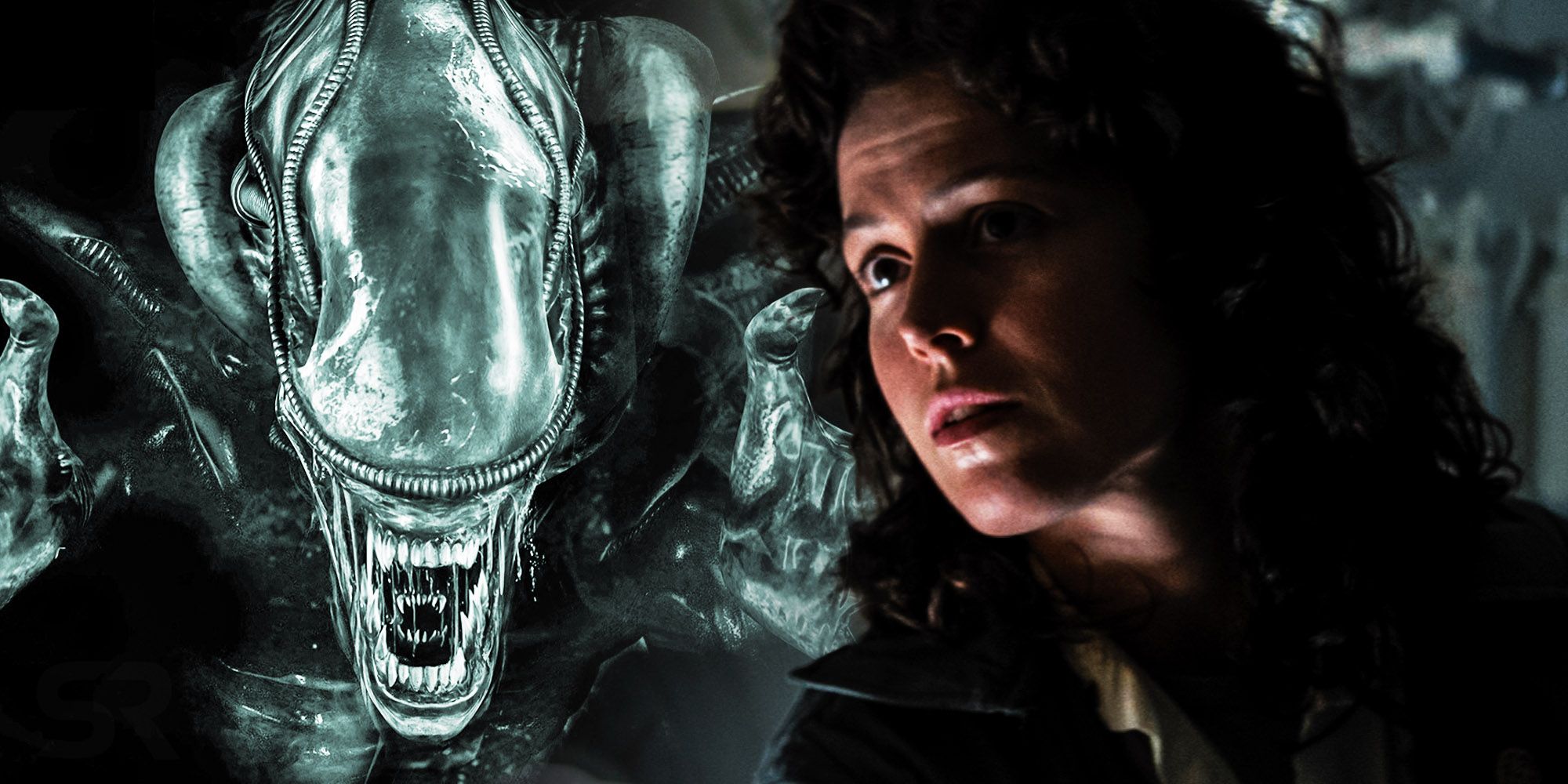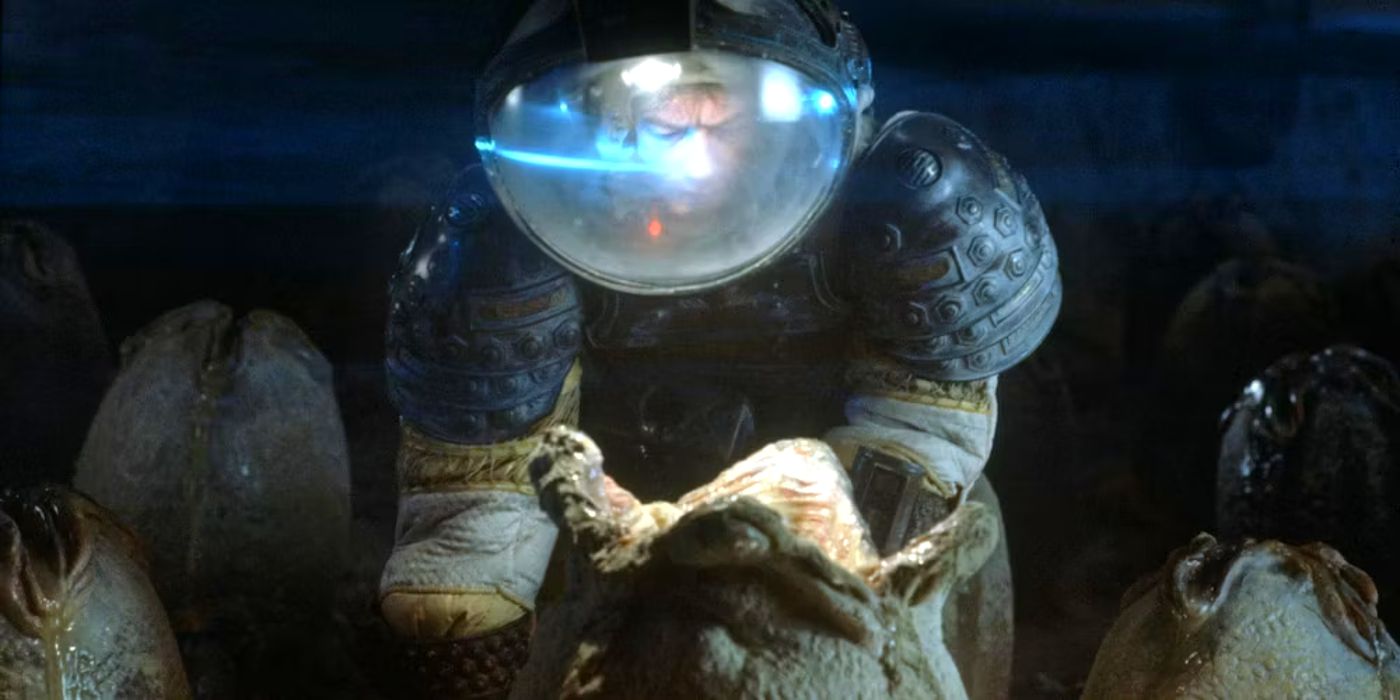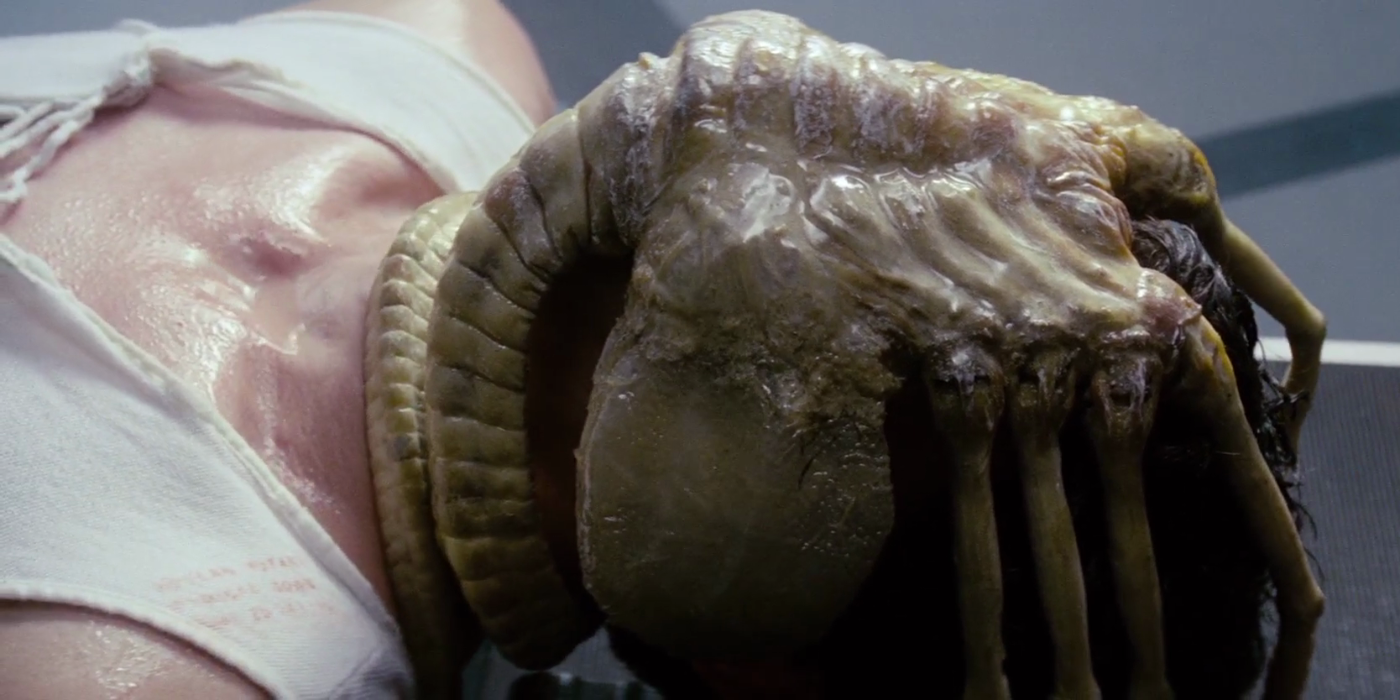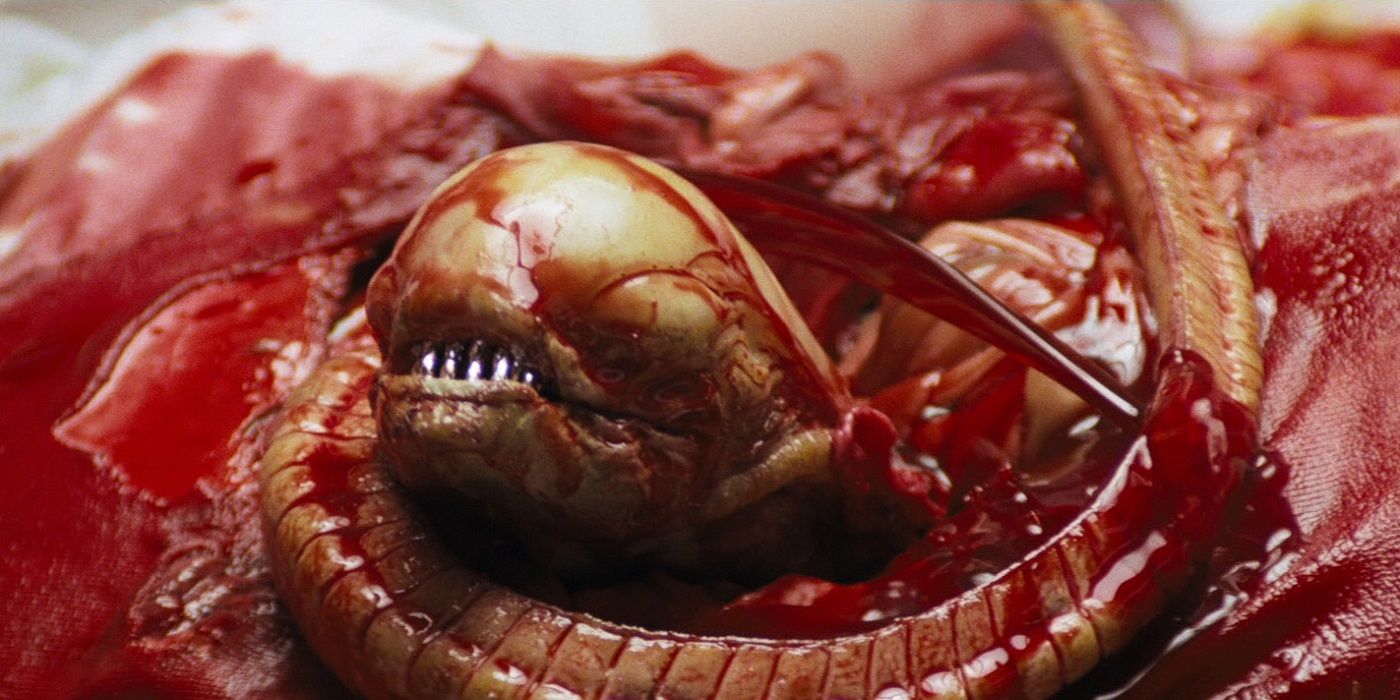Alien's horrifying antagonist, the Xenomorph, was created with various techniques, and the fact they were all practical special effects only made the Xenomorph even more terrifying. Widely regarded as one of the most frightening movies ever made, 1979's Alien created an iconic horror monster with the Xenomorph. A combination of genuine reactions, malfunctions, and restrictions caused by the use of practical effects, made the Xenomorph much more scary and effective. As director Ridley Scott remarked on his use of actual organs on the set of Alien, "The real thing's always better."
Alien's Xenomorph evolves through several stages as it stalks the crew of the Nostromo (most notably Ellen Ripley, played by Sigourney Weaver). Produced before CGI, Alien relied on practical effects exclusively to create its fearsome creature. This has several benefits, the biggest being that there was a physical monster on the set for the cast to properly interact with. The filmmaker's spectacular methods are detailed thoroughly in the DVD's behind-the-scenes documentary, The Beast Within: The Making of Alien. Evidently, practical techniques are precisely the reason the Xenomorph was so scary.
Ridley Scott Played Alien's Xenomorph Egg
The first stage of the Xenomorph's evolution in Alien is an egg that opens up upon gestation. As Kane (John Hurt) finds a chamber filled with Xenomorph eggs, he approaches one, and it opens. The eggs were individually crafted, with a hydraulic system to control the aperture. While computer-generated effects can produce beautiful imagery, they restrict how an actor interacts with a subject and environment. Alien's stunning elaborate sets greatly facilitated the actors' reactions, and the scene where Kane finds Alien's Xenomorph egg is improved because John Hurt was able to respond to it opening in-person and genuinely — a technique used throughout filming Alien.
The close-ups and perspective shots were filmed later. One simple yet compelling effect was to reverse footage of water dripping onto the eggs, creating an unearthly image of liquid dripping upwards. The egg itself was composed of translucent fiberglass filled with jelly. Ridley Scott wanted the alien larva inside to move but could not achieve the desired effect. So making a brief Alien cameo, director Ridley Scott himself donned a pair of rubber gloves and wiggled his fingers in the jelly. This lent the movement a natural physicality, creating a skin-crawling effect far more effective than could be created now with computer-generated special effects.
It is also a happy accident that arises in practical effects — unforeseen hurdles and creative solutions can sometimes create a more effective scene. It certainly made the Xenomorph's first appearance in Alien even more spine-tingling. This was aided in the point-of-view shot (looking into the Xenomorph egg from Kane's perspective) by using the lining of a cow's stomach to lend the creature a more organic and natural appearance, which explains why this Xenomorph evolution is particularly revolting to look at.
How Practical Effects Made Alien's Facehugger Scarier
The infamous facehugger is the second Xenomorph phase in the Alien franchise. Leaping from within the egg, the facehugger latches onto Kane's helmet, wrapping its long tail around his throat and finger-like appendages around his face. The part of the Xenomorph that first pounces was actually a sheep's intestine, continuing to use organs for a natural yet grotesque appearance. To achieve the startling leap, the filmmakers flipped this footage also. Pulling the intestines and the alien from the other side and then reversing the footage allowed for the unnatural leaping effect and speed.
Later, Alien's Nostromo crew have removed the facehugger and are dissecting it. Alien director Ridley Scott himself arranged a selection of seafood on top of the prop to create its visceral, grotesque flesh. Oysters, clams, and mussels formed the underbelly of the Xenomorph's facehugger stage. Not only is this another example of Ridley Scott personally preparing or performing practical effects, but also further demonstrates these effects allow for a more visceral engagement with an actor. Faced with yet more flesh appearing on the set of Alien, which reportedly was beginning to smell, genuine reactions of disgust are visible on the cast's faces.
Practical Effects Made Alien's Chestburster Scene More Shocking
The third stage of the Xenomorph's evolution bursts out of Kane's chest in the most famous scene of Ridley Scott's Alien. The first shot of the chestburster was actually captured when the prop malfunctioned. John Hurt lay on the table beneath a fake torso that hid his body. The chestburster was pushed through the fake torso from the other side, but they could not break through the fabric. This created the image of the Xenomorph covered in the bloodied cloth as blood violently spurts around it. The scene was quickly ended and reset before too much could be revealed to the cast, but the shot was kept and remains highly effective.
A common misconception surrounding Alien's infamous chestburster scene is that the cast was unaware of how the scene would unfold. Of course, the cast had read the script and understood in advance what would happen, but there was no rehearsal, and the scale of the scene was a surprise. Veronica Cartwright, who played navigator Lambert (and will appear in the upcoming Gotham Knights) claims she was assured only a small amount of blood would splash her. Despite this, Scott recalls a series of high-pressure pumps for the effect, stating they would "blow blood everywhere."
The fact the entire crew was dressed in plastic overalls should have tipped the cast off, but regardless, the genuine shock and fear are palpable. Veronica Cartwright recalls being hit with a "jet of blood" which startled her so much that she accidentally fell over a chair. Her scream punctuates the scene, helping make it one of the most terrifying in cinematic history. Regardless of whether or how much the cast knew in advance, they each adamantly attest all of their reactions were genuine, a result only possible with practical special effects.
Alien's Fully-Grown Xenomorph is Scarier Thanks To Practical Effects
The fully-grown Xenomorph is a terrifying combination of horror and science fiction. The beast is a costume worn by several performers, most notably Bolaji Badejo. Badejo was spotted in a London bar by Alien's casting director, who was struggling to find the appropriate performer to embody the Xenomorph. They were immediately dazzled by Badejo's frame, which Scott recalls is "almost 7 feet" tall and incredibly slender. Badejo was the perfect choice to create a human uncanniness, as well as a concurrent alien stature that the Xenomorph required. Badejo's performance gave life to the deadly monster, largely defined its movements and characteristics, and helped make Alien a science fiction classic.
The dependency on practical effects led directly to Badejo's casting and in turn, the Xenomorph's effectiveness. On the other hand, the Xenomorph's face was mechanical, controlled by a series of hydraulic levers, one of which would open the mouth and thrust the Xenomorpph's tongue out of its mouth. The mechanical creation assisted the tongue's speed, creating an incredibly expressive yet strange monster. But to make a man dressed in a costume appropriately horrifying, filmmakers must restrict visibility and disguise its artificiality.
Ridley Scott used effective editing and lighting to hide the Xenomorph's appearance in Alien with great consequence. The horror genre has always relied on audiences gazing into darkness and waiting for something to leap out. Using practical effects made this process a necessity. This contributed greatly to the claustrophobic tension permeating Alien and how Scott toyed with his audience. Not to mention that a properly shot costume will always look better than bad CGI. A large part of Alien's success was instigated by its use of practical effects, which, whether by accident or design, made the Xenomorph one of the scariest monsters ever.





